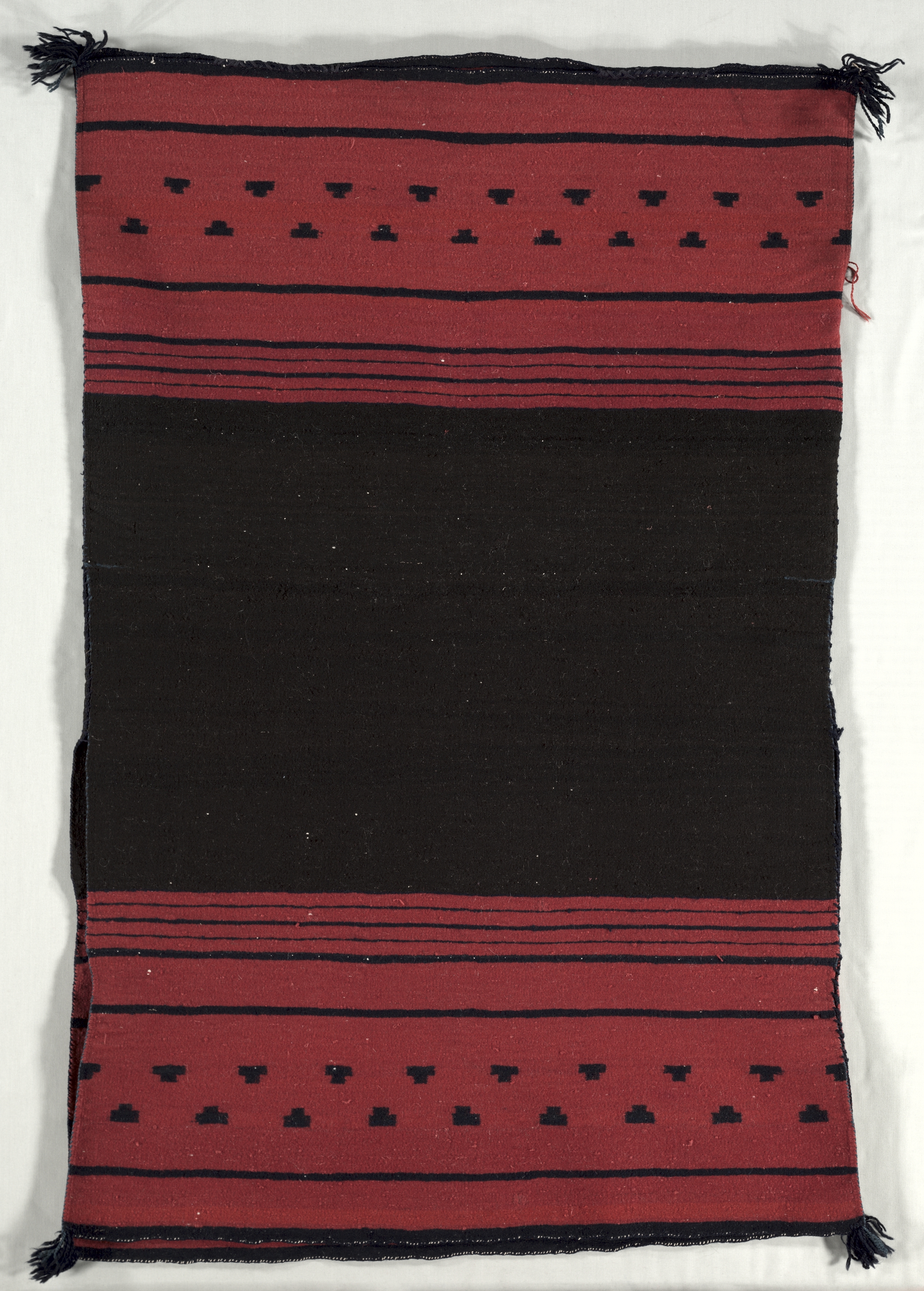The Cleveland Museum of Art
Collection Online as of April 18, 2024

Woman’s Two-Piece Dress (Biil’éé)
c. 1880–85
Overall: 145 x 99 cm (57 1/16 x 39 in.)
Educational Purchase Fund 1929.921
Location: not on view
Description
According to D. Y. Begay, the contemporary Diné (Navajo) weaver, every Diné woman should own a bill’éé (dress), which holds spiritual power, confers protection, encodes stories about the aesthetic of Diné culture, and ensures her place in society. This example is made of two matching panels attached on the sides and shoulders, a type that developed from single-panel dresses in the late 1700s. Originally gathered at the waist with a woven belt, the dresses also can be cinched with silver concha belts of Diné creation. Today, the bill’éé continues to respond to fashion trends and is worn on special occasions.- Bergh, Susan E., "Unburied Treasure", Cleveland Museum of Art. Cleveland Art: The Cleveland Museum of Art Members Magazine. Vol. 45 no. 10, December 2005 Mentioned & reproduced; p. 5 archive.org
- Native North American Textiles and Works on Paper (Gallery 231 rotation). The Cleveland Museum of Art (organizer) (December 9, 2022-December 3, 2023).Gallery 231 - Native North American Textile Rotation. The Cleveland Museum of Art, Cleveland, OH (organizer) (August 3, 2015-August 29, 2016).
- {{cite web|title=Woman’s Two-Piece Dress (Biil’éé)|url=false|author=|year=c. 1880–85|access-date=18 April 2024|publisher=Cleveland Museum of Art}}
Source URL:
https://www.clevelandart.org/art/1929.921